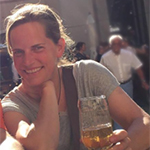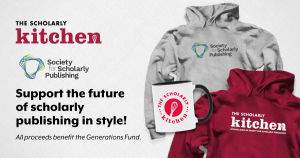Director of Marketing, Cenveo Publisher Services
 Please tell us a bit about yourself (e.g. hometown, current locale, course of study).
Please tell us a bit about yourself (e.g. hometown, current locale, course of study).
I live in Phoenixville, PA (25 miles west of Philadelphia) with my husband, two kids ages 12 and 10, and two cats. I studied German in college and was involved both in high school and college with foreign exchange. I don’t travel as much as I used to but I try to expand my kids’ minds about other cultures.
Describe some of your current responsibilities, and what type of organization you belong to.
I work as Director of Marketing for Cenveo Publisher Services. We provide services and solutions for every stage of the content lifecycle to scholarly and academic publishers. I like to say from “A (authoring) to X (XML)…we help publishers.”
Because I dislike invasive marketing or excessive advertising I strive to tell my company’s story in meaningful ways to our customers and prospects. At the end of the day, we are in scholarly publishing because we believe that this type of communication advances scientific knowledge that improves lives. I’ll never simply promote that “we do conversion.” Every service provider “does conversion.” Rather, I try to inform people about the difference between “good XML” and “valid XML” (see here for example).
I’m also trying to bring back more face-to-face interactions. It’s great to go to conferences a few times a year but I want that energy from the tradeshow floor and in-depth conversations throughout the year. We launched a “Lunch and Learn” program in which we host lunch and invite publishing executives to discuss a topic of interest. No powerpoints! No sales pitches! Just lunch and conversation. So far we’ve had intense conversations on MathML, Open Access, the creative workflow, apps and epub.
What was your first scholarly publishing role? How did you get that job? What path led to your current position?
I was an editorial assistant at Current Science right after college. If you entered publishing in Philadelphia in the late 80s or early 90s, chances are you went through Current Science or know someone who worked there. We call it Six Degrees of Current Science. It was before the Internet and the main selling point of the clinical review journals we published was something called the “Current World Literature.” A massive reference list compiled mostly by hand that detailed studies and research articles organized by clinical specialty.
I would walk from the Old City office to Jefferson University Library and photocopy TOCs from peer-review journals and compile into a bibliography. Around this time, the NLM launched a product called “Grateful Med.” My company licensed the ground-breaking CD-ROM format of the product and I trained myself on MESH terms and MEDLARS.
I didn’t realize it at the time but understanding semantics and content structure would provide the quick adoption and understanding of a language that would soon explode in publishing—SGML.
If there was a pivotal moment or key person in your career development, please describe briefly.
There have been many key people in my professional development. I think the timing of my entry into publishing is a major factor of how I ended up where I am today. I was a production editor at F.A. Davis Company Publishers when SGML began making its way into production workflows. The convergence of linguistics, semantics, content architecture, and production resulted in me quickly understanding that this markup language was going to be something big. I understood enough technology to speak with developers and I was fluent in production and editorial to understand business drivers. At F.A. Davis we quickly embedded SGML workflows into the production of two top-selling products: Taber’s Cyclopedic Medical Dictionary and Davis’s Drug Guide for Nurses. It was game changing in terms of how the products were being produced and we all learned a lot navigating SGML in the early days.
What tools, web sites and organizations do you find most valuable for your career development?
Obviously, The Scholarly Kitchen!
These days, I’m more inclined to set up news alerts and news feeds that bring content to me based on the topics I follow.
I’m enjoying how LinkedIn continues to refine its platform and while I use LI as a tool for dispersing information about my company (go ahead and follow us here!), I also enjoy browsing my LI newsfeed when I need to catch a break from work. Because I’ve curated my network carefully, I feel like I’m exposed to excellent information that’s relevant to me.
What are some of the surprises/obstacles that you’ve encountered during your career?
I just had an interesting conversation with a consultant at SSP in Vancouver who said that he is still working with publishers to get XML-early workflows as the norm. Surprising, I know!
I’m fascinated by the ebb and flow of digital and print. When the first iteration of the Kindle came out, I quickly proclaimed “that’s it…for all leisure reading, I am digital only.” At the time, I had my first child and it was tough to run out and buy a book or even go to the library when he was an infant so the thought of purchasing a book at 2 am sold me hard on digital only. But today I’m back to print for leisure reading. Our parent company, Cenveo, is a printer and I do believe in “eating your own dogfood.” But also, I spend so much time in front of devices that I think it’s important to read in print format at some point during the day.
What advice would you give to people interested in a career in scholarly communications?
I’m so pleased that I have a foundation that started in editorial and production. Inadvertently, my career followed the publishing workflow and I don’t think I would be good at my marketing job had I not learned how to copyedit and proofread! It just seems so logical to me that if you start with editorial and production you can easily transition into sales or technology or marketing. I would also advise people starting out in scholarly communications to recognize and honor that small details matter immensely—the Oxford comma, an em dash, spacing around mathematical symbols!
If you have a blog or personal/professional website, please provide a link.
Cenveo Publisher Services – http://www.cenveopublisherservices.com/blog/

